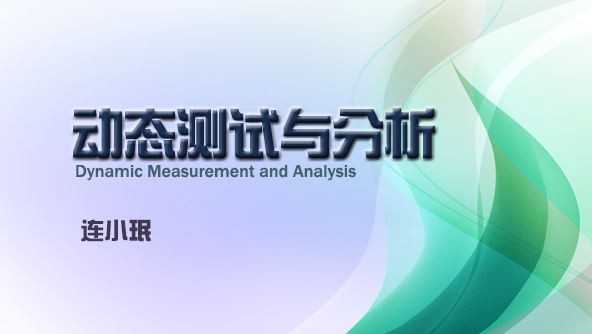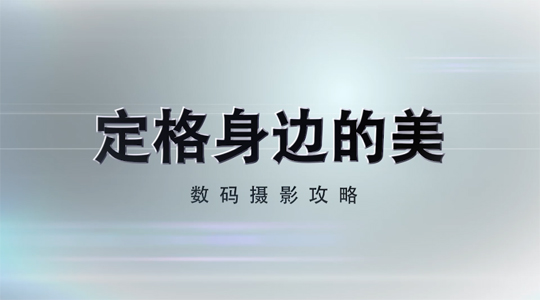
当前课程知识点:“一带一路”沿线国家跨文化商务交际 > 第二章 新加坡 > 2.3 新加坡商务礼仪 > 2.3 新加坡商务礼仪
返回《“一带一路”沿线国家跨文化商务交际》慕课在线视频课程列表
Now
let’s move on to the fun part
The intercultural business etiquette
In this part
we are going to talk about the following etiquettes
that you should pay strong attention to
while communicating with business men and women from Singapore
Dining manners
Business dress code
Communication
Business Cards
Punctuality and Gift giving
Dining manners
In Singapore
Your dining experience will likely depend on the cultural background
of your host
For example
Malays are largely Muslim
For Muslim
meat will be strictly halal(清真)
and no pork and alcohol is allowed
Malays traditionally eat with the right hand
The left hand is used for bodily hygiene
and is generally not used to touch food
Finger bowls are usually provided to clean your hands
before and after the meal
However
both when eating in a restaurant and at home
cutlery is provided as well
During the month of Ramadan
Muslims fast from sunrise to sunset
If you are invited to join a Muslim family during fasting
remember that this is an occasion of great religious significance
Fasting usually begins with red dates
If you bring a food gift
make sure it is halal
Hinduism or Sikhism avoid beef and wine
and eat a typical vegetarian diet
People in several parts of India also eat with their hands
and the rule of the right hand applies here as well
However
as with Malay cuisine
the restaurant will also provide cutlery
so you don’t have to worry
Anyway it’s kind of a courtesy to wash your hands before you eat
Depending on the variety
your food can be served individually or all at once
Many Indian meals also place vegetarian and meat dishes slightly apart
If you finish your plate completely
you may find that the host insists that you eat a little more
leaving a little dish on your plate shows that you are full and satisfied
Next
what about the dress code in Singaporean business scenarios
Most Singaporeans prefer business casual wear
However
for business occasions
men are advised to wear long-sleeved shirts and ties
Depending on the occasion
a jacket may also be required
Women can pair a long-sleeved top with an over-the-knee skirt
or a mid-length dress
Some women may also like to wear summer shirt dresses
The key is to appear fresh
competent and professiona
lThe next thing we need to learn more about
is the Singaporean’s Communication style
Singaporeans tend to use an implicit form of communication
There may be a small amount of “Singaporean”
in the business conversation
a combination of English
Mandarin and Malay
Singaporeans do not like to be outspoken
Similar to the British
manners are important and they will often use phrases
like “I’m not sure” or “we’ll see” to mean “no”
so don’t force it or risk being offended
Just like in India
“no” is an unpleasant word in Singaporean culture
and you should avoid using it
If it’s an appropriate response
it’s best to say “we’ll see”
Similarly
“yes” does not necessarily mean “yes”
You should read between the lines what the speaker is really saying
A hesitant “yes” could mean “no”
Other versions of “no” include “Yes, but...”
“Timing may not allow ... ” or simply not answering questions
Objections should be said very politely
so as not to cause you to lose face
so it is necessary to be aware of them
If you’re not sure what the answer means
then ask that question later
If told twice
“We’ll see”
that probably means “no”
In Singapore
it’s important to save face
and there’s a lot to be done to maintain harmony in relationships
Be polite
professional and patient at all times
and it’s hard to save face if that harmony is broken by disagreement
Singaporeans are group-orientated at the same time
as being indirect communicators
Facial expressions
tone of voice
Intonation and posture are all important ways
to decipher how someone is really feeling
In the process of creating harmony
Singaporeans often end sentences with the phrase “isn’t it”
meaning “isn’t it right?”
This helps to build consensus at different stages
Next
what should you do while exchanging Business Cards
In Singapore,
as with the standard interpersonal approach
business cards play an important role and are usually exchanged almost
as soon as a contact is made
The best way to exchange business cards is with both hands
with the letters oriented toward the receiver.
Accepting a business card is also done with both hands as a sign of respect
This is a respectful gesture and will almost certainly
be noted by your Singaporean partners
When you are offered a business card
receive it with both hands and examine the card carefully
Do not put the business card in your back pocket
since this is a sign of disrespect in Singapore
Instead
place the business card in front of you or on the desk
Also when someone offers you a business card
do not write on it in their presence
You can add details when you leave the meeting venue
Writing on cards is usually considered disrespectful
Punctuality is another thing we need to pay attention to
As Punctuality is an important part of corporate culture in many countries
but in Singapore
punctuality is elevated to a higher level
where being on time for meetings or notifying others
of any expected delays is key
While Singaporeans tend to be late
for social events
being late for business appointments is paramount to an insult
Unlike other Southeast Asians
Gift giving in Singaporean business occasions are unwelcome
because they smack of bribery
It should be noted that Singapore government officials
and government employees are not allowed to accept gifts
It is illegal for them to do so
In any case
gift-giving is a minefield because of the cultural differences
between three major ethnic groups (the Chinese, Malays and Indians)
and some gifts can be insulting
Most flowers are not accepted by any culture
because they are given to the sick
and are considered funeral flowers
It’s best not to give gifts in business occasions
When a Singaporean business partner invites you to a social event
it’s okay to give away a token like a bottle of wine
If your host abstains from alcohol for religious or other reasons
bring a box of chocolates
Also
don’t give gifts without doing your research
Don’t wrap gifts in white
as that symbolizes mourning
and don’t give them with your left hand
In addition
it is common to reject a gift not once
Twice
but three times before accepting it
Ok that’s all about Singaporean business culture
Hope you like its
See you next time byebye
-课程导语
-1.1 泰国的社会文化背景概况
-1. 2 泰国的核心文化价值观
-1.3 泰国商务礼仪
-1.4 泰国商务实践
-1.5 泰国商务中的跨文化交际陷阱
-1.6 Discussion
-1.7 Unit test
--1.7 Unit Test
-2.1 新加坡社会文化背景概况
-2.2 新加坡核心文化价值观
-2.3 新加坡商务礼仪
-2.4 新加坡商务实践
-2.5 新加坡商务中的跨文化交际陷阱
-2.6 Discussion
-2.7 Unit test
--2.7 Unit test
-3.1 马来西亚社会文化背景概况
-3.2 马来西亚核心文化价值观
-3.3 马来西亚商务礼仪
-3.4 马来西亚商务实践
-3.5 马来西亚商务语境中的跨文化交际陷阱
-3.6 Discussion
-3.7 Unit test
--3.7 Unit test
-4.1 哈萨克斯坦社会文化背景概况
-4.2 哈萨克斯坦核心文化价值观
-4.3 哈萨克斯坦商务礼仪
-4.4 哈萨克斯坦商务实践
-4.5 哈萨克斯坦商务语境中的跨文化交际陷阱
-4.6 Discussion
-4.7 Unit test
--4.7 Unit test
-5.1 沙特阿拉伯的社会文化背景概况
-5.2 沙特阿拉伯的核心文化价值观
-5.3 沙特阿拉伯商务礼仪
-5.4 沙特阿拉伯商务实践
-5.5 沙特阿拉伯商务语境中的跨文化交际陷阱
-5.6 Discussion
-5.7 Unit test
--5.7 Unit test
-6.1阿联酋的社会文化背景概况
-6.2阿联酋的核心文化价值观
-6.3阿联酋商务礼仪
-6.4阿联酋商务实践
-6.5阿联酋商务中的跨文化交际陷阱
-6.6 Discussion
-6.7 Unit test
--6.7 unit test
-7.1 印度的社会文化背景概况
-7.2 印度的核心文化价值观
-7.3 印度商务礼仪
-7.4 印度商务实践
-7.5 印度商务语境中的跨文化交际陷阱
-7.6 Discussion
-7.7 Unit test
--7.7 Unit test
-8.1 俄罗斯社会文化背景概况
-8.2 俄罗斯核心文化价值观
-8.3 俄罗斯商务礼仪
-8.4 俄罗斯商务实践
-8.5 俄罗斯商务中的跨文化交际陷阱
-8.6 Discussion
-8.7 Unit test
--8.7 Unit test
-9.1 波兰社会文化背景概况
-9.2 波兰核心文化价值观
-9.3 波兰商务礼仪
-9.4 波兰商务实践
-9.5 波兰商务中的跨文化交际陷阱
-9.6 Discussion
-9.7 Unit test
--9.7 Unit test
-10.1南非的社会文化背景概况
-10.2南非的核心文化价值观
-10.3南非商务礼仪
-10.4南非商务实践
-10.5南非商务中的跨文化交际陷阱
-10.6 Discussion
-10.7 Unit test
--10.7 Unit test
-期末考试





